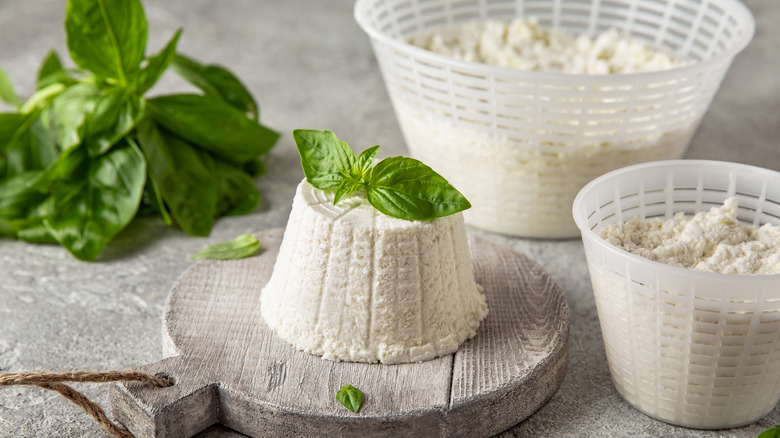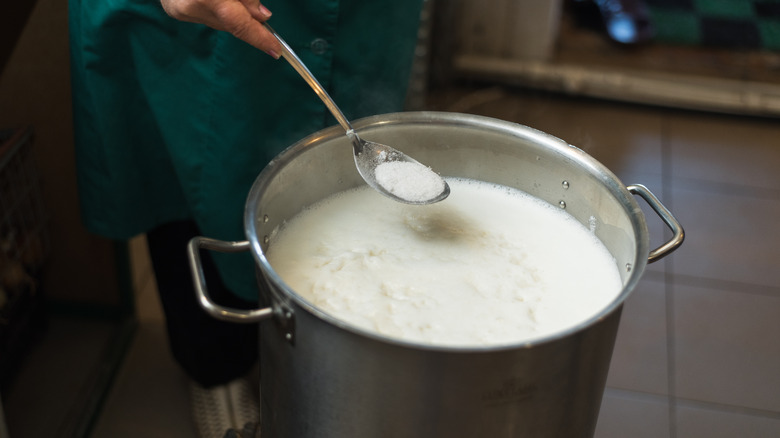Heat Up Your Ingredients Low And Slow When Making Ricotta Cheese
Ricotta is what you think of when you're craving a fresh, creamy cheese with a subtle milky flavor. The fact that it pairs well with both savory and sweet dishes means you can turn almost any dish into a ricotta cheese recipe: from lasagna and pizza to cheesecake and cookies. The best part is, like with most soft cheeses, making ricotta at home is a breeze. No need to worry about lengthy aging processes as is the case with aged cheese. That said, you can't speed up the process. The key to a great homemade ricotta cheese is ensuring the milk heats up low and slow.
Ricotta cheese can be made using just two basic ingredients: milk and acid (typically lemon juice, citric acid, or vinegar). The other two optional ingredients are cream and salt. Judging from this extremely small ingredient list, how you handle each one has a huge impact on your final product. For starters, milk contains delicate proteins that are responsible for creating curds that essentially form the cheese. At very high temperatures, these milk proteins are likely to denature thus preventing or limiting the curd formation. As a result, you may end up with very little cheese or none at all.
In case you're wondering, this is one of the reasons why ultra-pasteurized milk isn't recommended for making cheese — the milk is heated at extremely high temperatures during pasteurization, therefore limiting the ability of the proteins to clump together and form cheese.
More reasons for a low and slow simmer
If you're still not convinced about avoiding cranking up the heat, consider the likely effect on the subtle sweet taste of ricotta that you love dearly. Exposing your milk to high temperatures increases the chances of scorching it and ruining your cheese in a split second. If you've ever experienced this unfortunate event when boiling milk for any purpose, then you understand the consequences of even a hint of burnt flavor in the dairy — no amount of seasoning can mask that bitter taste, let alone the smell.
Additionally, trying to speed up your cheesemaking process could result in the milk boiling over, causing a mess, and wasting your precious commodity. To avoid this, simply exercise some patience and allow for a low and slow simmer. First, ensure your stove setting is no higher than medium or even medium-low. Then, as the milk simmers, you should see only a few bubbles breaking the surface and not full-on continuous bubbling. If you notice vigorous boiling starting to happen, turn down the dial or remove the saucepan from the stove momentarily as you lower the heat setting.

